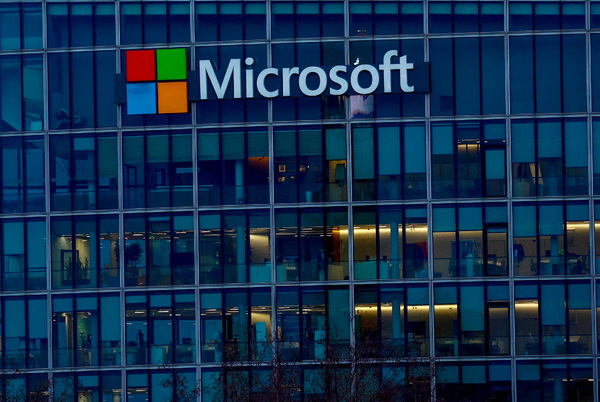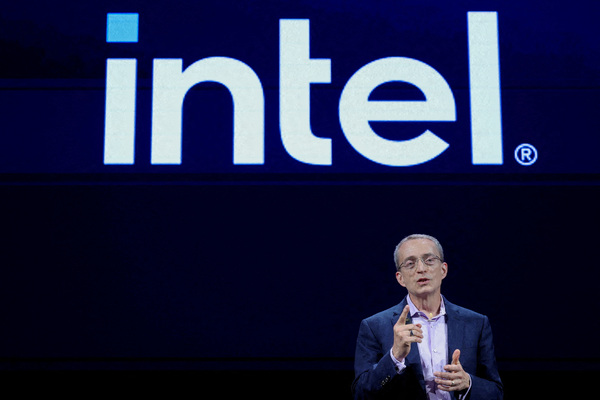An AI-led revolution in streamlining business cooperation: how to prepare for Microsoft 365 Copilot
How to lay the groundwork for an efficient Copilot adoption

The office-work software is on the brink of a great change. In early 2024, Microsoft announced that Copilot, as a part of its Microsoft 365 suite, became available to organisations of all sizes. This solution injects ChatGPT-like functions into business workflows and can generate new insights based on the specific company data. For over 1.2 billion Microsoft 365 users, it could bring a game-changing impact, both in terms of automation and productivity gains. As enterprises gear up for Copilot’s deployment, several steps are essential to enhance readiness.
Copilot and the Microsoft 365 ecosystem
Copilot represents an evolution in the Microsoft 365 ecosystem, as it integrates generative AI assistance into popular office-work software tools such as Word, Excel, Outlook and Teams, to name a few. It comprises four key elements: Large Language Models, Microsoft Graph (which integrates a company’s data), Microsoft 365 apps and the web. Overall, it offers Microsoft a long-sought opportunity to unify its diverse offerings under an umbrella of generative AI technology.
Organisations can use M365 Copilot for numerous everyday tasks. For example, during Teams video calls, M365 Copilot can instantly analyse relevant emails, documents and presentations to provide tailored talking points or meeting prep. This convenient support allows employees to access essential information without toggling between multiple applications.
M365 Copilot can also summarise long reports into concise overviews, which makes sure stakeholders grasp insights efficiently and promptly. These skills extend to extracting and presenting essential data from the CRM systems or Excel financial models. Copilot’s automated synthesis of ideas and their articulation in digestible formats help keep employee communication engaging and insightful.
The solution relies on Azure, Microsoft’s high-margin cloud computing platform, and taps into massive computing power. Azure enables Copilot to leverage advanced natural language AI models such as GPT-4 to generate relevant materials. All the user content and data that Copilot reviews are processed securely through Azure’s infrastructure.
Additionally, Microsoft offers developer tools such as the Copilot Stack on Azure to further customise Copilot’s abilities. With this instrument, enterprises can build custom-fit Copilots focused on particular workflows and data. There is also an option to create plug-ins that extend Copilot’s core functionalities within specific applications. This level of customisation allows M365 Copilot’s AI assistance to be specialised based on industry needs and individual business requirements.
Copilot readiness: several crucial steps
Interestingly enough, the adoption of AI solutions is a strategic move for enterprises, with 40 per cent of respondents claiming their organisations would invest in this technology, a recent McKinsey report states. In turn, a KPMG survey found that by mid-2024, four-fifths of companies will increase their investment in generative AI tools such as Copilot by over 50 per cent.
M365 Copilot holds a significant potential to transform your organisation’s workflows, but like any powerful tool its effectiveness hinges on a solid foundation. This foundation implies a meticulous preparation of your data ecosystem for the solution. Proper data governance, security controls and employee training sessions will help you attain the desired outcomes and ensure that employees actually use M365 Copilot to the fullest. Here’s an outline of the steps organisations can take to stay prepared for the rollout:
Analyse your organisation’s context
Think of this stage as taking stock of your organisation’s digital landscape and gauging its ability to seamlessly integrate M365 Copilot. Check integral prerequisites for using the solution.
As you evaluate your technology infrastructure, remember that a base licence (such as M365 E3 or E5) is required to be eligible for a Copilot for Microsoft 365 licence. To fully leverage Copilot capabilities, ensure your teams are using Microsoft 365 Apps, OneDrive or Microsoft Teams.
Define planned outcomes
What are you hoping to achieve by bringing M365 Copilot on board? Do you envision boosted productivity through automated tasks such as scheduling meetings or summarising emails? Be specific about your goals and translate them into measurable objectives. Define metrics to track progress and success, such as time saved, tasks completed or increases in user satisfaction. Set realistic targets and timelines for achieving these outcomes. Identify potential challenges and develop mitigation strategies to navigate any hurdles that may arise.
Audit data for the Copilot deployment
Delve into your data. Conduct a thorough audit to assess data quality, accessibility and compliance with privacy regulations. Identify relevant data sources such as emails, documents or SharePoint sites that hold the key to M365 Copilot’s effectiveness. Finally, gauge user comfort with AI tools and potential resistance to change. Assess training needs and identify resources for ongoing user support. Engaging stakeholders such as IT specialists, user groups, and leadership throughout the process fosters an informed approach.
Set up data security and compliance
To guarantee responsible data usage, take time to fully understand your organisation’s datasets. Consider built-in and custom sensitive information types, trainable classifiers and labelled content tools.
Next, it is a great idea to define a clear label taxonomy and apply labels manually or at scale via auto-labelling. With your data classified and labelled, create tailored data loss policies (DLPs) that establish content-sharing rules and restrictions. Apply them across Microsoft 365 apps, devices and browsers to prevent oversharing of sensitive materials.
Create a change management plan
Identify key stakeholder groups and assess their concerns through surveys and focus groups. With their feedback, craft targeted messaging explaining M365 Copilot’s benefits and providing training on new workflows. Schedule demonstrations and hands-on labs to build skills and enthusiasm. Monitor adoption metrics and gather user input to improve the rollout. Make resources such as tip sheets, videos, and FAQs easily accessible to support users. Investing in thoughtful change management is time well spent to use Copilot’s potential to the maximum extent.
Preparation for M365 Copilot requires looking beyond the surface to address deeper challenges and empower employees to benefit from new generative AI capabilities. This intricacy comes with the understanding that M365 Copilot presents an opportunity to rethink workflows and transform them with intelligent augmentation. Hence, just as much focus should be on change management as the technology. A similar is applied to M365 Copilot’s possibilities and limitations; as AI-powered software becomes prevalent, it takes a nuanced foresight to navigate the delicate balance between trust and critical mindset.
Copilot and the principles of trustworthy AI
Microsoft takes a multilayered approach to privacy in M365 Copilot. Organisations have complete control over their data. They can learn where their data is stored based on the region they signed up in and available Azure data centre locations. Microsoft also provides tools to see geographic data flows and supports data residency requirements. Data at rest is encrypted, and data in transit is protected through encryption protocols such as Transport Layer Security (TLS).
M365 Copilot operates on generalised AI models pre-trained with publicly available and synthetic data. This means customer data is not directly used to train LLMs and foundational models. The service learns general patterns and does not retain private data, as Microsoft highlights. This AI architecture allows Copilot to make relevant suggestions and preserve customer privacy.
Takeaways
With the infectious popularity of generative AI tools in 2022, it was inevitable that the technology went mainstream. The release of M365 Copilot is a gradual step for Microsoft to inject generative AI capabilities into every aspect of business operations. With careful preparation, this push into generative AI can bring your company a new wave of innovation.
Importantly, you should approach M365 Copilot and other AI advances as a collaborative technology that leans on human oversight. The future of hybrid human-AI organisations has arrived – be a pioneer by starting a conversation with us.

Damian Koper is a seasoned IT professional with 16 years of experience, primarily focused on Microsoft technologies. Specialising in designing and executing data migrations to Microsoft 365 tenants, he has a passion for exploring and consulting on the latest Microsoft innovations. His expertise not only lies in successfully leading projects but also in driving technological efficiency and advancement within the industry.

Business Reporter Team
Most Viewed
23-29 Hendon Lane, London, N3 1RT
23-29 Hendon Lane, London, N3 1RT
020 8349 4363
© 2024, Lyonsdown Limited. Business Reporter® is a registered trademark of Lyonsdown Ltd. VAT registration number: 830519543






